Argentine ATSF Railroad YMCA
Introduction
Text-to-speech Audio
Images
The Argentine ATSF Railroad YMCA as it looks today, operating as El Centro Community Center
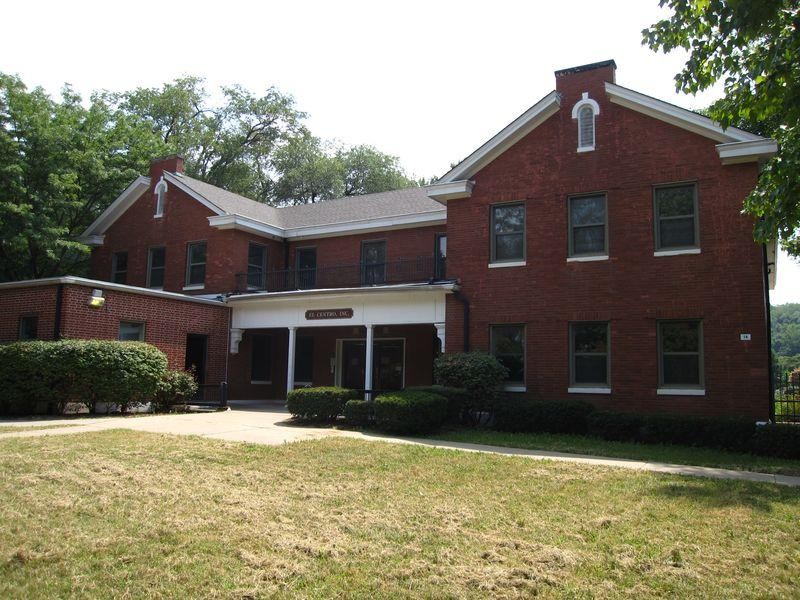
Map of the ATSF Railroad System
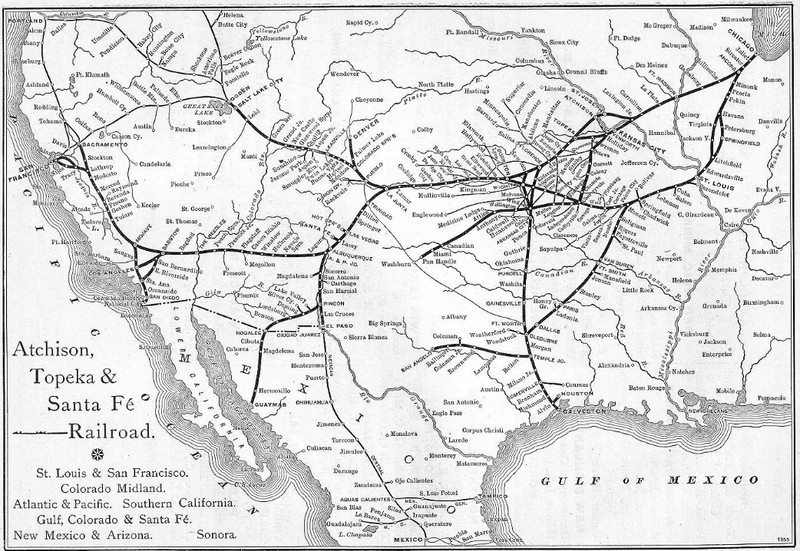
Blueprints of the original 1899 YMCA, which was destroyed by fire in 1935
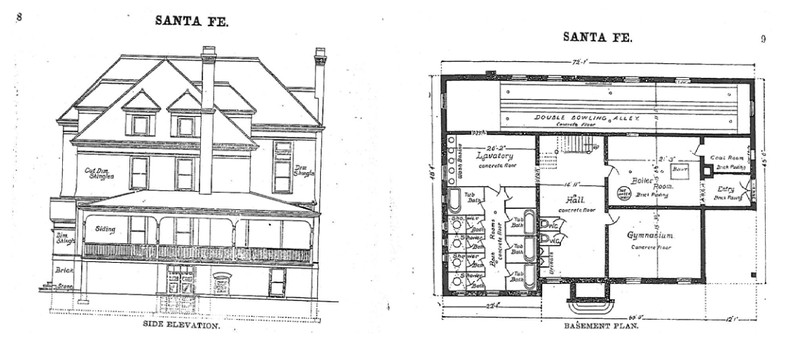
An image of the ATSF yards in Argentine. The YMCA is the white building on the far left behind the depot
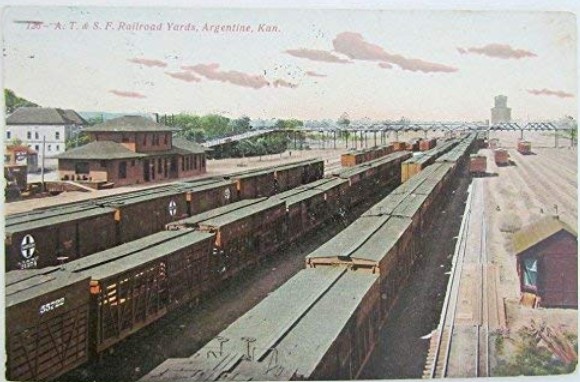
ATSF workers in 1892 in front of the depot
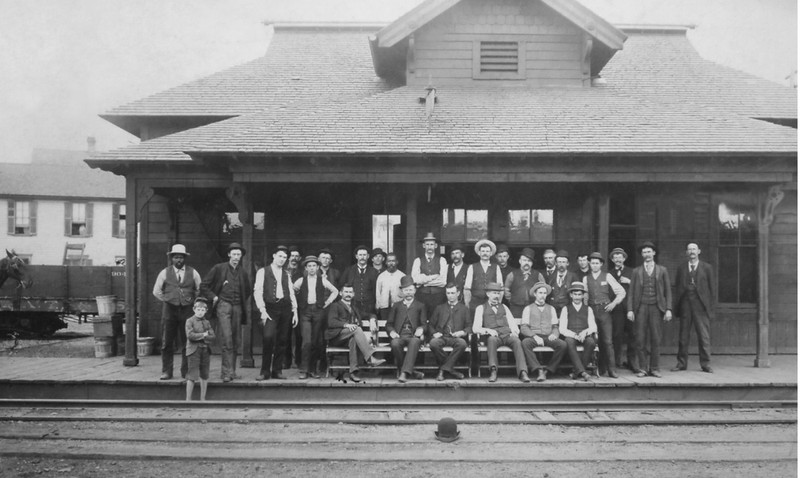
A mural in Argentine depicts Mexican railroad workers living in the boxcars that brought them to Argentine
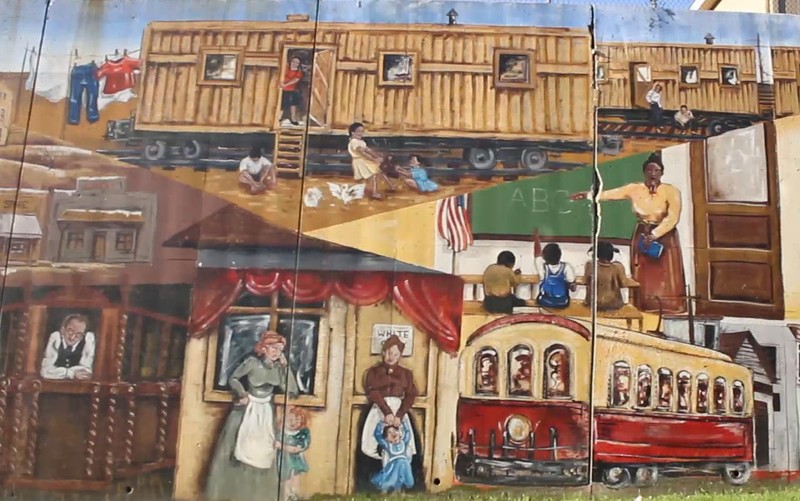
A newspaper story about the new Railroad YMCA in 1937
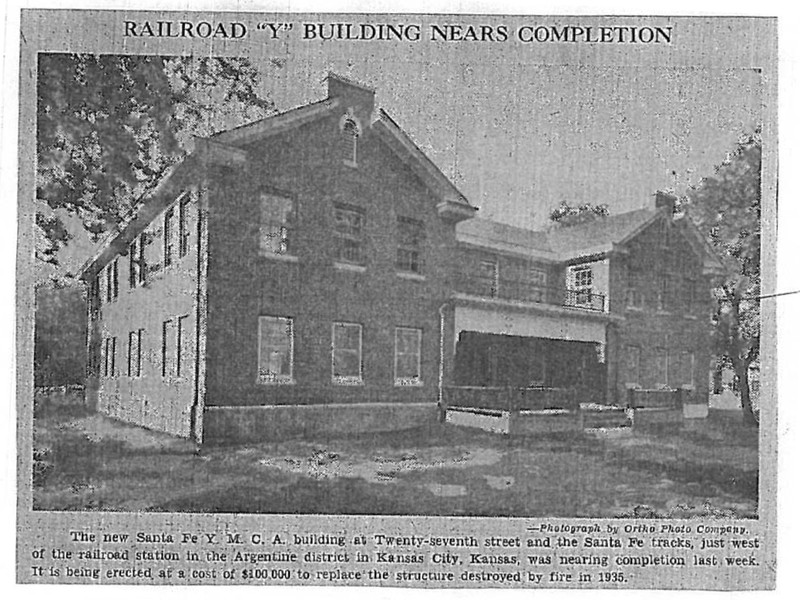
The Railroad YMCA in 1951
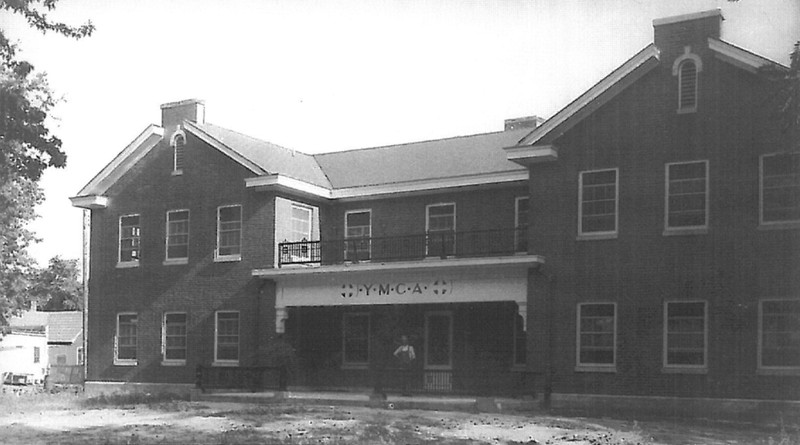
Backstory and Context
Text-to-speech Audio
The Atchison, Topeka, and Santa Fe Railroad (ATSF) was formed in 1863, and would become one of the largest railroads in the country. [1] In 1875, ATSF established a railway yard on 128 acres near present-day Argentine, consisting of terminal facilities, transfer sheds, round houses, machine shops, repair shops, a coaling depot, and an ice house. [2] By 1890, the railroad had about 500 workers on its payroll. [2] Many of the workers were Mexican recruits who had experience laying railroad tracks. These early Mexican railroad workers often lived with their families in the boxcars they had arrived in. [3]
In 1899, a Young Men’s Christian Association (YMCA) was constructed for the ATSF workers in Argentine. There were several Railroad YMCAs around the country, which were constructed to provide safe, affordable, and “wholesome” lodging and services for railway workers. The Argentine YMCA was three stories tall, and the $10,000 to build it was mostly paid for by ATSF. It contained dormitories for 72 beds, bathrooms, two bowling alleys, a gym, a large hall, a library, classroom, and several other spaces for socializing. By 1921, the building was used by about 24,000 workers every year, more than any other Railroad YMCA in Kansas. [4]
In 1935, a fire destroyed the Argentine YMCA, and a replacement was completed in 1937. The new brick building was slightly smaller than the original, with two stories that contained 44 beds, a lobby, and a recreation room. The YMCA remained busy in the following decades, but by 1970, it was the only remaining operational Railroad YMCA in the country. [4] Several additions and alterations were made to the building around this time. In the early 1980s, the YMCA finally closed, after over 80 years in operation. The building was sold to El Centro, Inc. in 1986 and converted to a community center to provide support and programs to Hispanic families and immigrants. It is still in use as such today. The building was added to the Kansas State Register of Historic Places in 2013.
Sources
1. The Editors of Encyclopaedia Britannica. “Atchison, Topeka and Santa Fe Railway Company.” Encyclopædia Britannica. January 2, 2019. Accessed October 16, 2019. https://www.britannica.com/topic/Atchison-Topeka-and-Santa-Fe-Railway-Company
2. Shutt, Edwin Dale II. “’Silver City,’ A History of the Argentine Community of Kansas City, Kansas.” Masters’ Thesis, Division of Social Sciences, Emporia Kansas State College. August 1974, page 21. Accessed October 16, 2019. https://esirc.emporia.edu/bitstream/handle/123456789/2565/Shutt%20II%201974.pdf?sequence=1.
3. Rodriguez, Lisa. “Take A Journey Through History Along The Argentine Mural In KCK.” KCUR 89.3, National Public Radio. Jun 5, 2015. Accessed October 16, 2019. https://www.kcur.org/post/take-journey-through-history-along-argentine-mural-kck#stream/0.
4. Klocke, Jonathan. “Register of Historic Kansas Places – Registration Form: Argentine ATSF Railroad YMCA.” Kansas State Historical Society Website. Form prepared August 6, 2013. Accessed October 16, 2019. https://www.kshs.org/resource/national_register/nominationsNRDB/Wyandotte_ArgentineATSFRailroadYMCASR.pdf.
Sarah Martin: https://khri.kansasgis.org/index.cfm?in=209-2193
https://www.kshs.org/resource/national_register/nominationsNRDB/Wyandotte_ArgentineATSFRailroadYMCASR.pdf
https://www.kshs.org/resource/national_register/nominationsNRDB/Wyandotte_ArgentineATSFRailroadYMCASR.pdf
https://www.kshs.org/resource/national_register/nominationsNRDB/Wyandotte_ArgentineATSFRailroadYMCASR.pdf
Michael Coy: https://www.kcur.org/post/take-journey-through-history-along-argentine-mural-kck#stream/0
https://www.kshs.org/resource/national_register/nominationsNRDB/Wyandotte_ArgentineATSFRailroadYMCASR.pdf
https://www.kshs.org/resource/national_register/nominationsNRDB/Wyandotte_ArgentineATSFRailroadYMCASR.pdf
